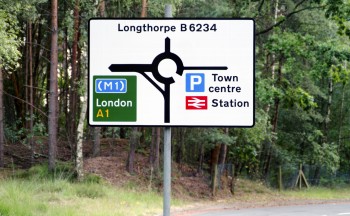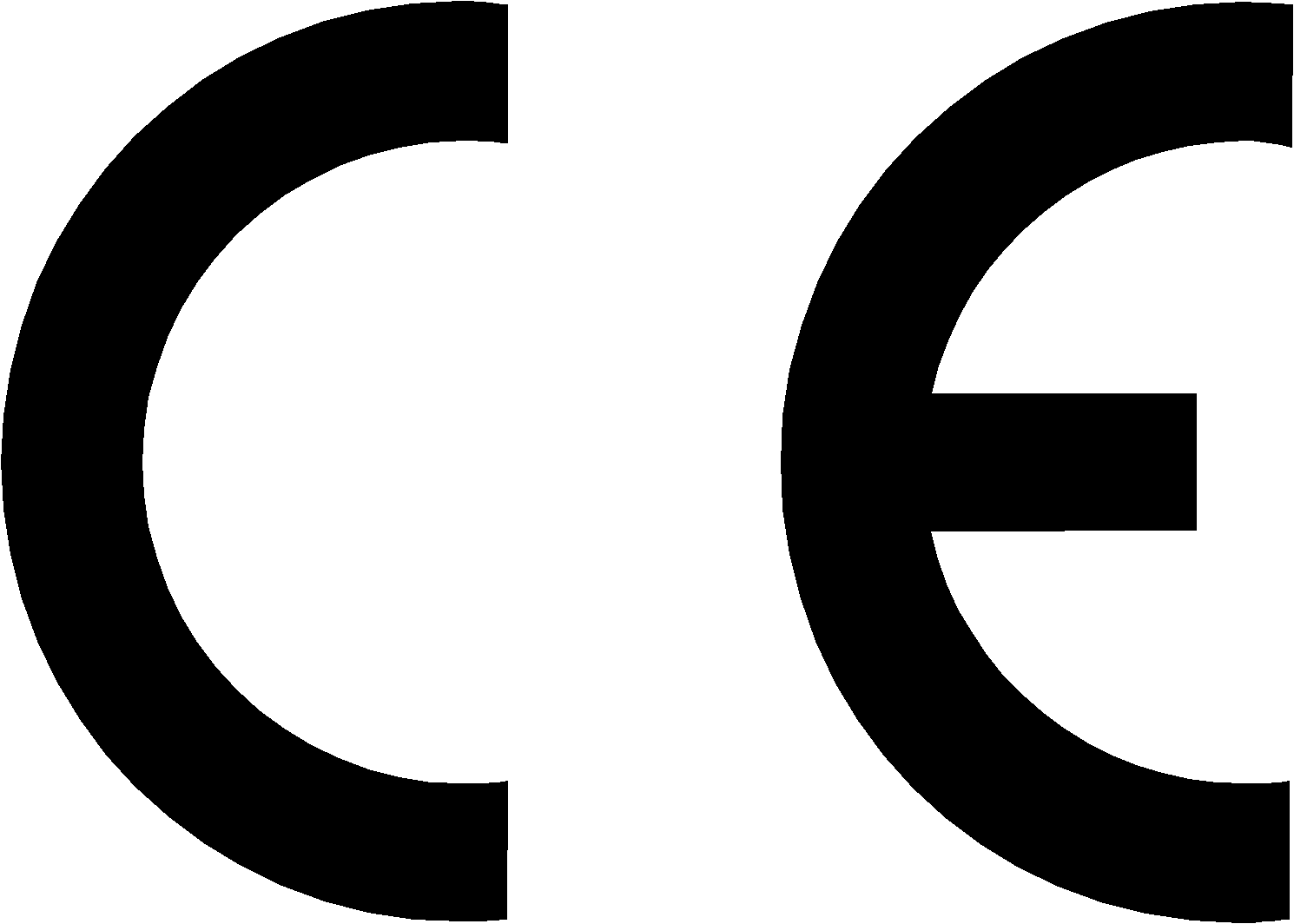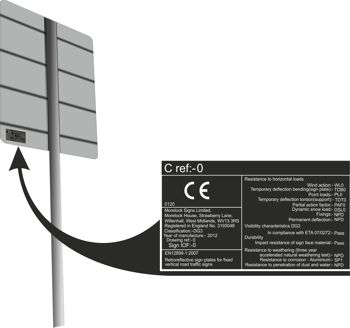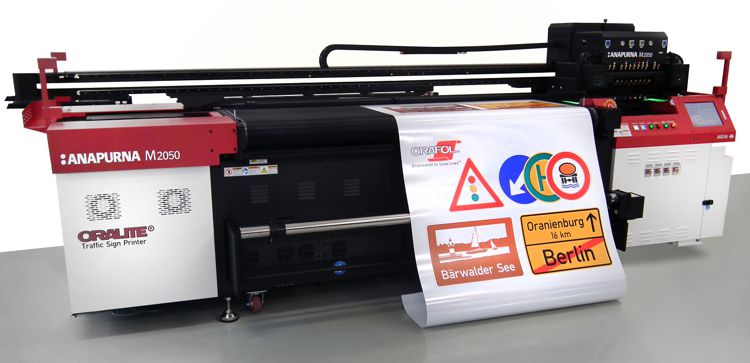Traffic Safety Signage: A Quiet Revolution?
Is the introduction of CE Marking for fixed road sign installations likely to prove good or bad for the UK sign industry?
Over the past 12 months sign makers across the UK have got used to the many leaflets and brochures turning up in their offices and inboxes, each one carrying long explanations and notes of caution about the introduction of CE Marking for fixed traffic sign installations.
So what is CE Marking and what does it offer road sign makers and the sign industry?
Read on as SignUpdate magazine cuts through the summer haze to tell you all you need to know about CE Marking regulations, looks at some of the benefits it is bringing the sign industry and asks the question can the CE Mark really deliver increased quality signs at lower cost?
"I love my job" says Steve Crane, national sales manager for sign manufacturer Tennants UK"though out in the car my family don't always share in my enthusiasm for checking out road signs as we pass by! "It's a bit like being a judge on the X Factor or The Voice" explains Steve; many signs are of good quality, some of very, very good quality and others very poor. "In the end poor quality signs, hard to see or read, or covered in dirt and peeling, all put at risk my safety and the safety of my family, as well as everyone living in the UK. "Today more than ever" observes Steve, "cars, cyclists and pedestrians all rely on the millions of signs to be found on UK roads to travel and arrive safely and keep out of each other's way. If a sign is worn out, not fully lit, covered in dirt, damaged, or has just faded, then it's not doing its job. In today's world that simply isn't good enough."As an industry we are looked to by government and public agencies to produce quality signs that are right first time, every time, which demands much more than just getting the words right and colours correct".
A quiet revolution?
The introduction of a CE Marking scheme for fixed traffic signs is being talked about as bringing a revolution in the market for road signs. New opportunities for a level playing field and increased competition between suppliers is being welcomed for the boost it could give to the market, as well as the more rigorous quality standards it will inevitably bring to traffic signs and components. "CE Marking is in my opinion the biggest step forward for road users and sign makers in 50 years!" explains Steve, who has real enthusiasm for the changes the scheme is bringing.
CE Marking for road signage - the basics
From 1 July 2013, any traffic/directional sign erected on a road to which the public has access must be manufactured in accordance with a Europe wide CE standard. The standard applies to any road traffic sign installed whether on a public highway, in a car park or petrol station forecourt, at an airport (landside) or a supermarket and other similar locations used by the public. CE standards apply to complete signs, and individual components used to make up signs.Road traffic signs made by manufacturers or sold by sign sellers must meet the CE standard, though this doesn't mean that every sign manufacturer or seller has to hold CE Mark accreditation.
Confused? There will be understandable confusion until the scheme settles down and manufacturers and sellers increase their understanding of how it applies to their business.
ARTSM (The Association for Road Traffic Safety and Management) have produced a comprehensive and invaluable industry guide to the introduction of CE Markings and what it means. 'CE Marking Road and Traffic Signs' from www.artsm.org.uk.
CE Marking for road signs - Q & A's
Q. What is CE Marking for traffic signs?
A. A mark or stamp on a fixed traffic sign, or individual sign components, certifying manufacture to an independently certified standard and that the sign is fit for its purpose (conforms to its declared performance). The CE mark is a manufacturer declaration that their product meets European safety, health, environmental protection and other fitness for purpose requirements.
Q. CE Marking for Traffic Signs – what are the key changes?
A. From 1st July 2013, any road traffic sign installed on a highway where a member of the public can legally drive their car must carry a CE Marking certifying its fitness for intended purpose. The CE Marking regulations apply only to signs and sign products placed on the market from 1st July 2013.
 Q. Who tests and accredits CE Marking for traffic signs?
Q. Who tests and accredits CE Marking for traffic signs?
A. The notified bodies responsible in the UK for implementing CE marking of traffic signing standards are the British Standards Institute (BSI), SGS and LRQA. The European Standard for traffic signs is BS EN 12899-1
Q. Who uses/applies the CE Mark?
A. Sign manufacturers, sign sellers, manufacturers of components used in constructing signs. A CE marking is a manufacturer declaration that their product meets European safety, health, environmental protection as well as fitness for purpose requirements. From 1 July any business can manufacturer, supply and sell traffic signs or sign components as long as their signs carry the relevant CE mark and have been audited by a notified body.
Q. What are the benefits of CE marking?
A. The CE marking scheme helps make trade between EU countries easier and cheaper. A CE Mark means that a manufacturer's product conforms to the minimum legal requirements for health and safety as laid down in EU directives.Customers often look for CE marking on a product as an indication of conformance to laid down standards, and a level of quality that other products may lack. CE Mark accreditation is only given following independent audits and assessments.
Q. what immediate changes can be expected from introduction of CE Marking for road signs?
A. The list could be endless! Some early changes are likely to include:
-
-
- Low quality/price material suppliers withdrawing from the market due to not being able to meet CE Marking standards
- Increased competition in the market and pricing changes as CE Marked material suppliers from Europe and worldwide increase their presence in the UK market
- Wider choice of suppliers for sign sellers and customers with more of a level playing field amongst suppliers meeting CE marking requirements
-


Industry views
British Sign and Graphics Association (BSGA) Director David Catanach is keen to make sure manufacturers know and understand the implications for them of the new CE marking standard.
Writing recently in the BGSA newsletter David commented "Many sign manufacturers may think that, as they do not provide signs for use on highways, the new CE standard does not affect them. However, Section 64 of the Road Traffic Regulations Act 1984 defines a traffic sign as 'any object or device for conveying to traffic on roads or any specified class of traffic, warnings, information, requirements, restrictions or prohibitions of any description".
Interestingly recent UK case law established that any road to which the public has access will be subject to the new CE standard for traffic signs. In practical terms from 1 July 2013 it is likely that 99% of road and traffic signs will be expected to conform to CE standards and carry CE markings.
As a pioneer for the use of reflective materials in road signs 3M first achieved CE Mark accreditation for its road and traffic sign materials in 2006. Since then it has supported leading UK sign manufacturers, including William Smith of Durham and Morelock Signs in the West Midlands, to gain their own CE accreditation. The Highways Agency has been consistent over many years in encouraging traffic sign businesses to become CE accredited. The guarantees of quality and standards provided by CE accreditation are well known and respected for their simplification of tendering and contracting processes, and for helping ensure consistent safety and performance standards on UK roads.
Tennants UK believe that one of the biggest benefits will emerge over time as customers increase their use of the CE Marking standard as a means of guaranteeing quality and reducing signage costs. "It's simple" says Steve Crane
"the customer now knows that the CE Mark on a sign or materials, wherever they are sourced from, is a reliable guarantee of quality and standards. We now have an open and competitive market with a wide range of suppliers meeting CE standards where price competition can offer savings previously not available. That is the true revolution!"
The final word
Guaranteed quality, a wider range of suppliers and lower prices all sound like a dream result for customers.
Will the revolution come and will it be a good thing for the UK road sign industry? Could suppliers from abroad invest in CE accreditation and steal a march on UK companies, or will UK companies expand their European operations? And will smaller sign companies use CE Marking requirements to increase their share of the UK market where previously only the bigger players could operate?
Whatever the future holds, CE Marking for fixed traffic signs is here to stay and SignUpdate magazine will follow progress over the next year to keep you up to date on the changes it brings. In the meantime let's hope CE Marked signs can make car trips a little more relaxing for Steve Crane, and his family!
Our thanks for help putting together this feature go to:
Tennants UK, Nottingham
www.tennantsuk.com
Morelock Signs Ltd, West Midlands
www.morelocks.co.uk
William Smith & Sons Co. Durham
www.williamsmith.co.uk
3M
www.3M.co.uk
